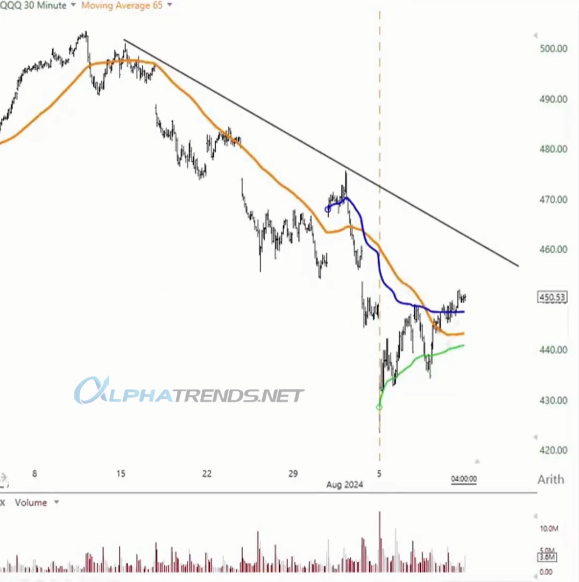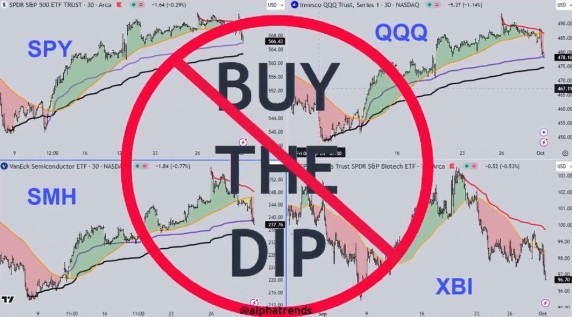We’re not going to talk about yet another opinion about what the tariffs mean for the economy.
Instead, let’s talk about price action—about supply and demand for stocks. That doesn’t mean I don’t care about the economy, but my business is stocks, that’s what I do, that’s how I get paid.
First, this is not a normal environment.
I’m currently trading off a 15-second chart. That’s insane. No one should be trading off a 15-second chart in normal times.
But these aren’t normal times.
Everything is getting smashed—equities, gold, oil, Bitcoin, etc. They say that, in a crisis, all correlations go to one. When there’s panic selling, there’s nowhere to hide—simply don’t expect to make money going long.
Anything is possible. If I had a dollar every time the market surprised me, I’d never have to trade stocks again!
But know this: It can always get worse.
There’s no such thing as ‘down too much’ when we still have sellers.
Anyone who’s claimed we’re at support has so far been 100% wrong and doesn’t really understand supply and demand.
If you try to catch the bottom, you’ll almost certainly be unsuccessful. As I keep saying: Don’t buy the dip. It’s better to be on the sidelines in cash wishing you were in, than to be in the market wishing you were out.
I’m a trader. I’m not interested in buying weakness. I don’t want to buy when there’s blood in the streets—and the streets have been bloody for the past two months.
When buying in downtrends, expect to lose money.
I don’t make the rules—that’s just market action. That’s the way stocks trade when the market is in a downtrend.
While we’re below a 200-day declining moving average, the market is guilty until proven innocent.
We’re in a downtrend, meaning lower-highs and lower-lows. The sum of the declines is greater than the sum of the rallies.
Those rallies can be substantial and represent great trading opportunities—the markets never go straight down—but I won’t trust rally attempts. Not while the 200 DMA is declining, and while we’re below the key moving averages.
(And when we get bounces, the anchor from the tariffs is going to be a very important level.)
Many bottoms will be called, and most of them will be incorrect.
I don’t make predictions.
I look at potential levels of support—remember, no one knows where true support lies until after the fact—then look for evidence that buyers are gaining control on a shorter-term timeframe.
Where we have some evidence, I ask myself how I can take a trade here with the lowest amount of risk, setting a stop loss. And if the market disagrees with me, I move to the sidelines.
Follow price action and be quick to admit when you’re wrong.
No one is a perfect trader.
Anthony Crudele had a great tweet this weekend, saying that he’s not trying to be the best trader—and nor am I. (I’ll let Lance Breitstein do that!)
But I do well in the markets, and I do it on my terms. I have rules of engagement. And I want to help people avoid the carnage in this market—and ideally help them make some money, because most people prefer to go long.
I’m not interested in calling the bottom. But I am interested in getting involved when there’s evidence that buyers are gaining control, while always asking myself: What are the greater odds?
Again: Don’t trust rally attempts while we’re below the key moving averages but that doesn’t mean we can’t trade those rallies.




